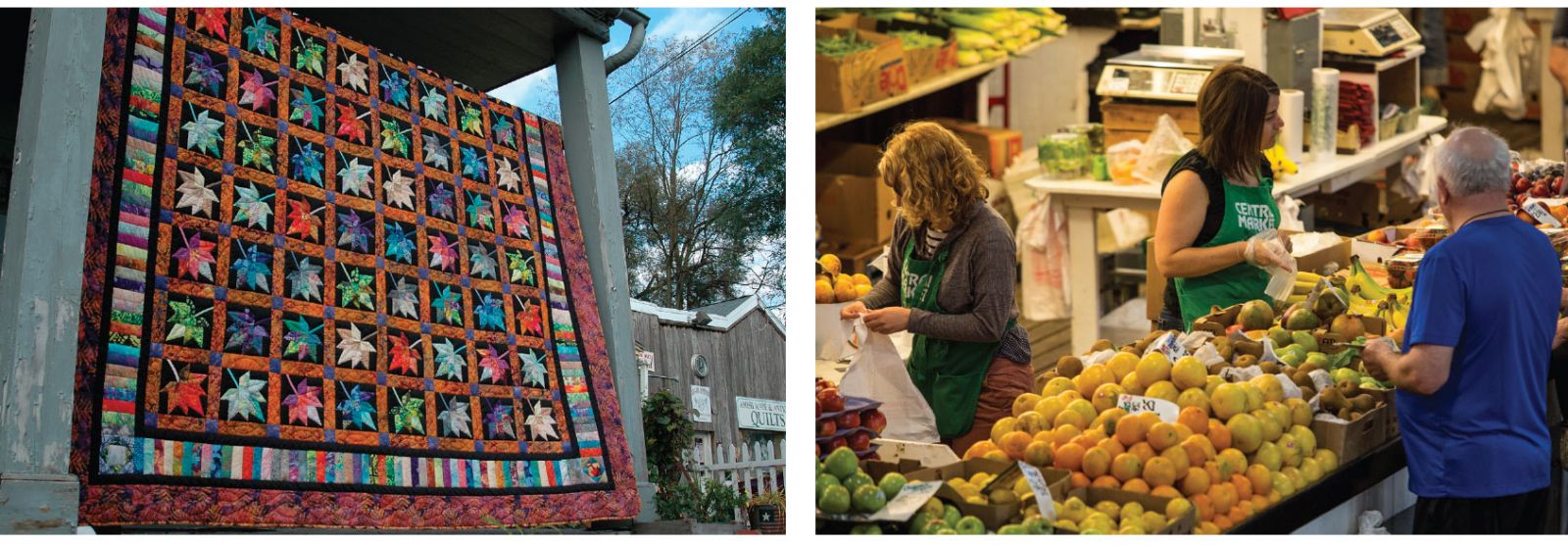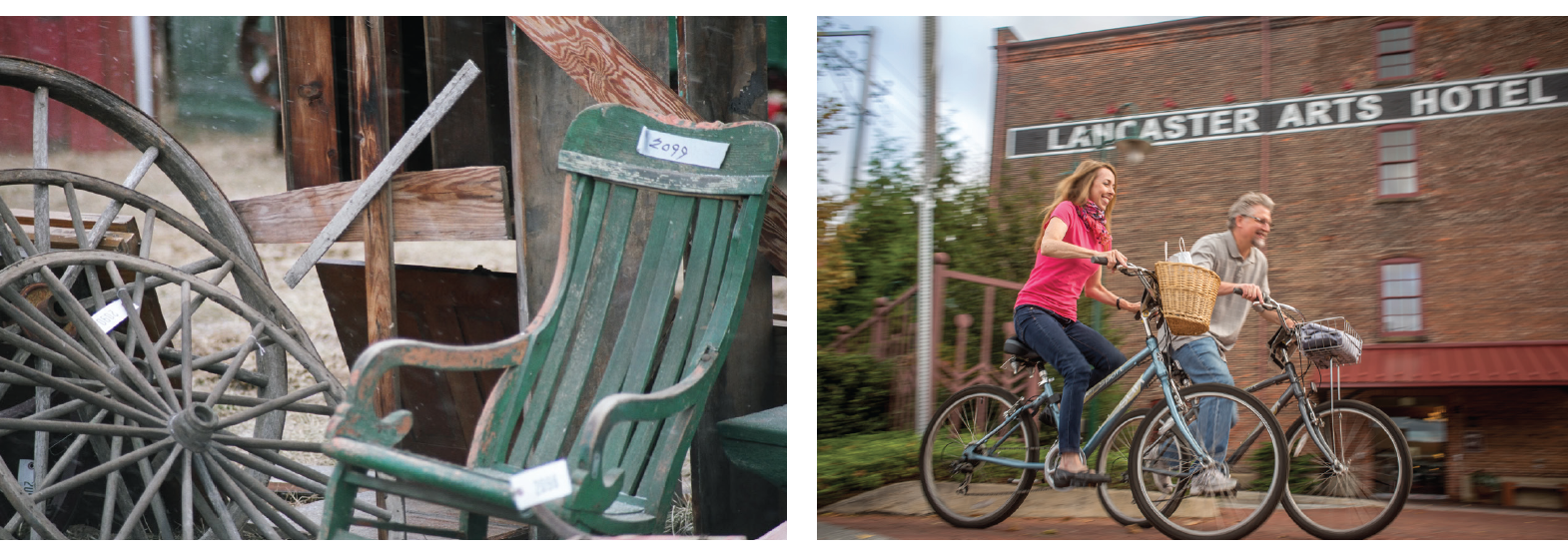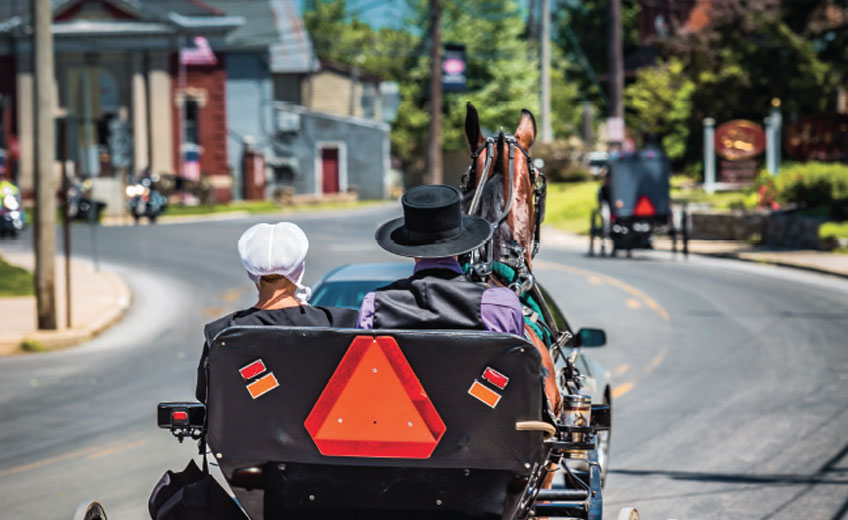The sun has yet to fully peek over the horizon, and the morning frost hasn’t melted from the muddy fields, but activity is already bustling. Tiny country lanes are lined with buggies parked next to BMWs, and in the fields the scene is just as varied. Soon groups of Amish men will start hauling all kinds of items up to several stages set up around the fields, and the quick patter of auctioneers will fill the air. Big city socialites stand alongside groups of teenage Amish girls, and young Amish boys scuttle between groups of men looking over the livestock and farm equipment that’s soon to be up for bid.
This is a Lancaster County mud sale, a weekend staple in the Pennsylvania community also known as Amish country, an area just 90 minutes west of bustling Philadelphia but one that seems worlds apart. Lancaster County is home to the nation’s oldest Amish population, a conservative Anabaptist religion known for its Plain dress and a simple way of life that dates to the 1700s, when the Amish first emigrated to the US after escaping religious persecution in Europe. Here the Amish live much as they did in the 1700s. They farm the land using teams of horses and mules to lead the ploughs. They eschew modern technology and travel via horse and buggy. They don’t have television or computers; in fact, they don’t use electricity at all. The Amish way of life is led by a strong commitment to family and God.

The Amish lead a quiet and peaceful way of life, but their unique lifestyle has also intrigued millions of visitors who come to Lancaster each year to learn more about them. The Amish themselves are not part of a theme park or attraction; they’re simply living their lives and prefer to do so undisturbed. However, there are many ways visitors can experience the Amish way of life. A first stop should be the Amish Experience or Amish Village, which provide visitors with tours of the countryside (including in an Amish buggy), the chance to explore a recreation of an Amish home, watch demos showcasing aspects of Amish life and even sample the delights of a traditional Amish meal, complete with heaping platters of things like fried chicken, brown butter noodles, farm-fresh vegetables and shoofly pie. Many Amish have opened their farms as cottage industries, where visitors can browse exquisite hand-made Amish quilts or wooden furniture.
Venture downtown to Lancaster Central Market, the oldest continuously operating farmer’s market in the US, where Amish and English (how Amish refer to non-Amish neighbours and visitors) stand holders offer everything from flowers and fresh meats to intricate spices and crafts. Discover the quaint towns and villages that dot the countryside by touring the county’s famous covered bridges, many as old as the Amish traditions themselves, or experience the countryside from the rails with a scenic tour aboard an old steam engine train known as the Strasburg Railroad. But in addition to all of these wonderful opportunities, a springtime visit should also include that quintessential Amish experience – the mud sale.
Amish mud sales cannot be experienced anywhere else. Held on weekends throughout most of the spring and named for the just-thawed, muddy farm fields in which they’re held, mud sales are giant auctions to benefit community fire departments. The sales bring Amish and English together to bid on everything from produce and livestock to hand-made quilts, housewares, and clothing. Quite literally, there’s often everything but the kitchen sink up for auction.

“Twenty … 20 … 20 … do I hear 30?” booms the rapid-fire voice of a young auctioneer as his sidekick, a tall Amish fellow in traditional black clothing and straw hat with a dark beard and sunglasses, helps to scout out interested bidders. Featured up for bid is a collection of five glass bottles, each with a very intricate design. The gavel pounds. “Sold!” A cheer goes up from the crowd as the winning bidder rushes off to collect her prize. And that’s just at one stage. Mud sales often have as many as six or seven auctions going on simultaneously, with teams of Amish teens and young adults on hand at each to help winning bidders cart their purchases to their cars.
For English visitors, a mud sale is perhaps the best way to truly rub elbows with Lancaster County’s Amish community. Book a quaint B&B (or if you’re adventurous, try a working farm B&B) in the Amish countryside and feast on an early breakfast before heading out to the sale for an experience like no other. Looking for that one-of-akind handmade Amish quilt? Amish women often donate their handiwork to benefit the local sales. Hunting for that perfect antique accessory to finish a kitchen? You’ll find everything from antique tools and housewares to milk bottles and serving pieces here. Interested in farming? Mud sales are the place to browse tractors, livestock or lumber. Furnishing a unique home? Packed among the items up for bid will be furniture, crafts or plants
And the food! Lancaster County is also known as the “Garden Spot of America”, and it’s easy to see why. Each spring, the drab winter landscape gives way to a brilliant green hue as farm fields begin to come alive for the season. Throughout the year, while driving through the countryside, visitors will see dozens of roadside stands (some with honour boxes for payment) with fresh fruits and veggies and sweet baked goods. At the sales, save some time to sample from the many food vendors on hand. A mud sale’s the perfect place to fill your stomach with a piping hot bowl of home-made chicken corn soup. Grab a cup of coffee and sample some of those famous baked goods, from sticky buns to shoofly pie. For lunch, enjoy some fresh-fromthe-farm barbecued chicken and wash it down with some home-made root beer, a favourite among the local Amish community. Looking for something a little more plentiful? Don’t worry – you’ll also find truckloads of produce up for bid .
A visit to Lancaster’s Amish community is unforgettable at any time of year. This peaceful community provides a glimpse into the past amid some of the most beautiful rolling countryside in the country, anda look at a simpler life – one without our own reliance on tech devices and modern conveniences. And with a springtime visit, whether you’re seeking that once in-a-lifetime souvenir or just want to explore a local tradition like no other, an excursion to a Lancaster County mud sale is a must-do. Just don’t forget to wear those mud boots. You’ll need them.
Lancaster County, Pennsylvania welcomes as many as 11 million visitors from around the world each year. Mud sales are held on weekends from mid-February to early April. Visit discoverlancaster.com to learn more and schedule a visit.





















































































































































































































































































































































































































































































































































































































































































































































































































